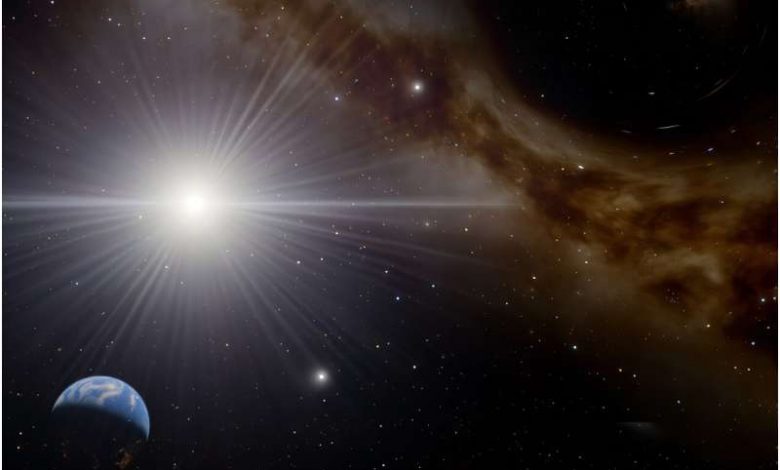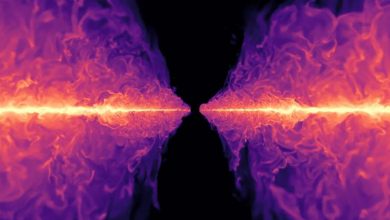Primordial black hole’s final burst may solve neutrino mystery

The last gasp of a primordial black hole may be the source of the highest-energy “ghost particle” detected to date, a new MIT study proposes.
In a paper appearing today in Physical Review Letters, MIT physicists put forth a strong theoretical case that a recently observed, highly energetic neutrino may have been the product of a primordial black hole exploding outside our solar system.
Neutrinos are sometimes referred to as ghost particles, for their invisible yet pervasive nature: They are the most abundant particle type in the universe, yet they leave barely a trace. Scientists recently identified signs of a neutrino with the highest energy ever recorded, but the source of such an unusually powerful particle has yet to be confirmed.
The MIT researchers propose that the mysterious neutrino may have come from the inevitable explosion of a primordial black hole. Primordial black holes (PBHs) are hypothetical black holes that are microscopic versions of the much more massive black holes that lie at the center of most galaxies. PBHs are theorized to have formed in the first moments following the Big Bang. Some scientists believe that primordial black holes could constitute most or all of the dark matter in the universe today.
Like their more massive counterparts, PBHs should leak energy and shrink over their lifetimes, in a process known as Hawking radiation, which was predicted by the physicist Stephen Hawking. The more a black hole radiates, the hotter it gets and the more high-energy particles it releases. This is a runaway process that should produce an incredibly violent explosion of the most energetic particles just before a black hole evaporates away.
The MIT physicists calculate that, if PBHs make up most of the dark matter in the universe, then a small subpopulation of them would be undergoing their final explosions today throughout the Milky Way galaxy. And, there should be a statistically significant possibility that such an explosion could have occurred relatively close to our solar system. The explosion would have released a burst of high-energy particles, including neutrinos, one of which could have had a good chance of hitting a detector on Earth.
If such a scenario had indeed occurred, the recent detection of the highest-energy neutrino would represent the first observation of Hawking radiation, which has long been assumed, but has never been directly observed from any black hole. What’s more, the event might indicate that primordial black holes exist and that they make up most of dark matter—a mysterious substance that comprises 85% of the total matter in the universe, the nature of which remains unknown.
“It turns out there’s this scenario where everything seems to line up, and not only can we show that most of the dark matter [in this scenario] is made of primordial black holes, but we can also produce these high-energy neutrinos from a fluke nearby PBH explosion,” says study lead author Alexandra Klipfel, a graduate student in MIT’s Department of Physics. “It’s something we can now try to look for and confirm with various experiments.”
The study’s other co-author is David Kaiser, professor of physics and the Germeshausen Professor of the History of Science at MIT.





